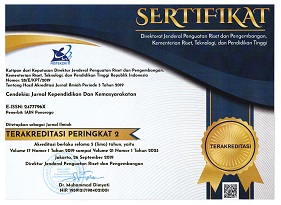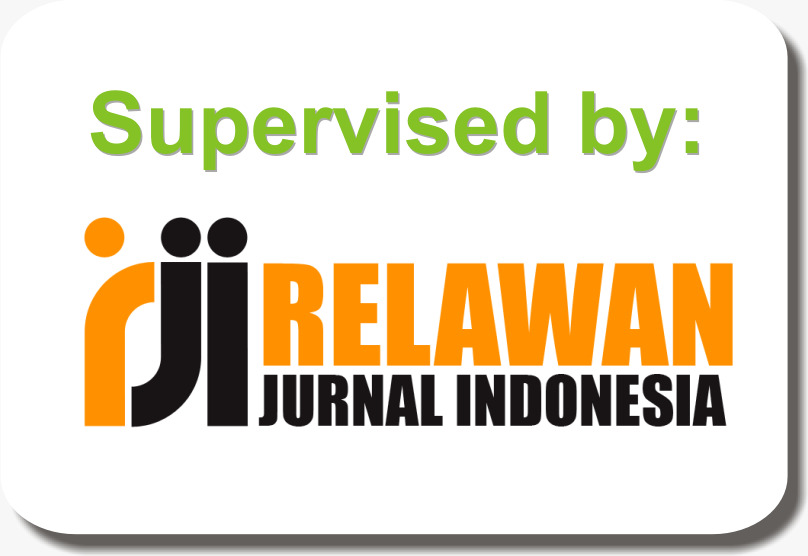AUTHENTIC MATERIALS IN EFL CLASSROOMS
DOI:
https://doi.org/10.21154/cendekia.v12i2.233Abstract
Abstrak; Banyak guru bahasa yang akhir-akhir ini membahas tentang pentingnya penggunaan materi otentik dalam kelas Bahasa Inggris sebagai Bahasa Asing (English as a Foreign Language-EFL). Pendapat persuasif para ahli Pengajaran Bahasa Inggris sebagai Bahasa Asing juga bersikeras bahwa bahasa Inggris yang ditampilkan di dalam kelas EFL seharusnya materi otentik agar siswa benar-benar masuk dalam penggunaan bahasa Inggris di kehidupan nyata. Secara umum, sebagian besar guru-guru EFL setuju bahwa materi otentik bermanfaat dalam proses belajar mengajar, terutama bagi siswa. Yang sangat penting tentang penggunaan materi otentik dalam kelas EFL adalah tentang kapan materi tersebut diperkenalkan kepada siswa dan bagaimana menggunakannya. Artikel ini menyajikan definisi dari materi otentik, kemudian diikuti dengan eksplorasi keunggulan dan kelemahan dalam pelaksanaannya di kelas EFL. Kemudian beberapa pertimbangan tentang penggunaan materi otentik di kelas EFL juga dibahas. Yang terakhir adalah beberapa contoh tugas dan kegiatan kelas yang menggunakan materi otentik ditampilkan sebagai contoh penerapannya secara praktis di kelas EFL.
الإنجليزية الدراسية الÙصول ÙÙŠ أصلية مواد استخدام أهمية على مؤخرا ناقش الذي اللغة معلمي من العديد
تدريس خبراء من مقنعة الرأي أجنبية. أصر كلغة الإنجليزية اللغة ،أجنبية كلغة ةيزيلنجلإا أجنبية كلغة
أصلية EFL مواد الدراسية الÙصول ÙÙŠ عرضها يتم الإنجليزية اللغة أن أيضا أجنبية كلغة الإنجليزية اللغة
ةيبلاغ نإ٠،عام بشكل .الØقيقية الØياة ÙÙŠ الإنجليزية اللغة استخدام ÙÙŠ Øقا الØصول الطلاب أن ÙŠÙترض
على جدا مهم أمر وهو .للطلاب ةصاخو ،التعلم عملية ÙÙŠ Ù…Ùيدة أصلية مواد أن على EFL تتÙÙ‚ المعلمين
ةيÙيكو للطلاب المواد إدخال يتم عندما EFL Øوالي الدراسية الÙصول ÙÙŠ الØجية ذات مواد استخدام
الÙصول ÙÙŠ التنÙيذ ÙÙŠ والضع٠القوة نقاط استكشا٠اهيلت ،الأصيلة المواد تعري٠المقالة هذه تقدم .اهمادختسا
كلغة الإنجليزية اللغة Ùصول ÙÙŠ أصلية مواد استخدام Øول الاعتبارات بعض أيضا تناقش EFL. ثم الدراسية
كمثال أصلية مواد تستخدم التي ةيÙصلا تاطاشنلاو المهام من الأمثلة بعض ويرد هي الأخيرة أجنبية. هذه
.EFL الدراسية الÙصول ÙÙŠ العملي التطبيق على
Downloads
Published
How to Cite
Issue
Section
License
Copyright & License
Please find the rights and licenses in Cendekia: Jurnal Kependidikan dan Kemasyarakatan. By submitting the article/manuscript, the author(s) agree with this policy. No specific document sign-off is required.
1. License
The non-commercial use of the article will be governed by the Creative Commons Attribution license as currently displayed on the Creative Commons Attribution-NonCommercial 4.0 International License.
2. Author(s)' Warranties
The author warrants that the article is original, written by the stated author(s), has not been published before, contains no unlawful statements, does not infringe the rights of others, is subject to copyright that is vested exclusively in the author and free of any third party rights, and that any necessary written permissions to quote from other sources have been obtained by the author(s).
3. User/Public Rights
The spirit of Cendekia: Jurnal Kependidikan dan Kemasyarakatan is to disseminate articles published as free as possible. Under the Creative Commons license, Cendekia: Jurnal Kependidikan dan Kemasyarakatan permits users to copy, distribute, display, and perform the work for non-commercial purposes. Users will also need to attribute authors and Cendekia: Jurnal Kependidikan dan Kemasyarakatan on distributing works in the journal and other media of publications. Unless otherwise stated, the authors are public entities as soon as their articles got published.
4. Rights of Authors
Authors retain all their rights to the published works, such as (but not limited to) the following rights;
- Copyright and other proprietary rights relating to the article, such as patent rights,
- The right to use the substance of the article in own future works, including lectures and books,
- The right to reproduce the article for own purposes,
- The right to self-archive the article,
- The right to enter into separate, additional contractual arrangements for the non-exclusive distribution of the article's published version (e.g., post it to an institutional repository or publish it in a book), with an acknowledgment of its initial publication in this journal (Cendekia: Jurnal Kependidikan dan Kemasyarakatan).
5. Co-Authorship
If the article was jointly prepared by more than one author, any author submitting the manuscript warrants that he/she has been authorized by all co-authors to be agreed on this copyright and license notice (agreement) on their behalf and agrees to inform his/her co-authors of the terms of this policy. Cendekia: Jurnal Kependidikan dan Kemasyarakatan will not be held liable for anything arising due to the author(s) internal dispute. Cendekia: Jurnal Kependidikan dan Kemasyarakatan will only communicate with the corresponding author.
6. Royalties
Being an open accessed journal and disseminating articles for free under the Creative Commons license term mentioned, the author(s) are aware that Cendekia: Jurnal Kependidikan dan Kemasyarakatan entitles the author(s) to no royalties or other fees.
7. Miscellaneous
Cendekia: Jurnal Kependidikan dan Kemasyarakatan will publish the article (or have it published) in the journal if the article's editorial process is completed. The editors of Cendekia: Jurnal Kependidikan dan Kemasyarakatan may modify the paper to a style of punctuation, spelling, capitalization, referencing, and usage that deems appropriate. The author acknowledges that the article may be published so that it will be publicly accessible, and such access will be free of charge for the readers, as mentioned in point 3.

















